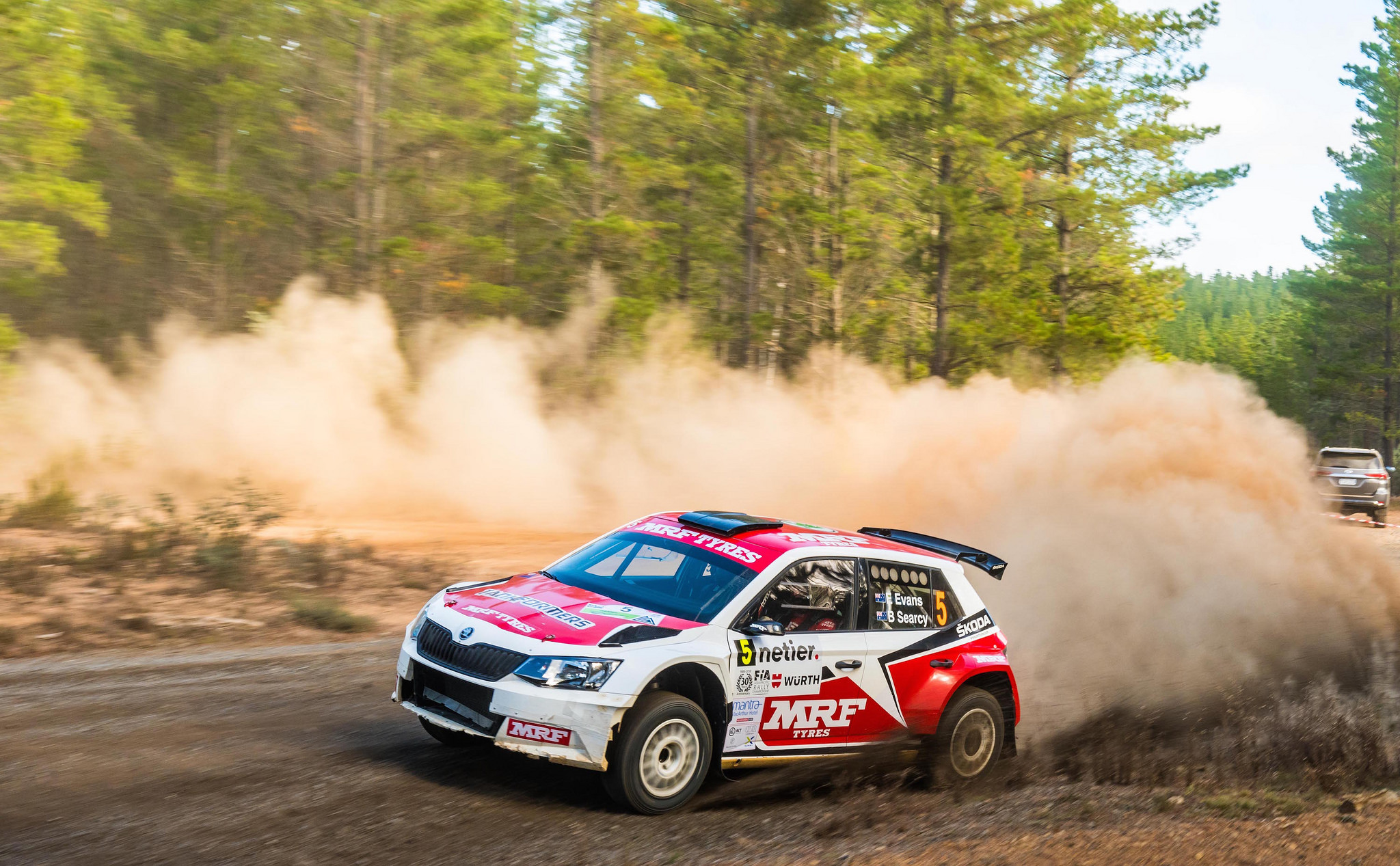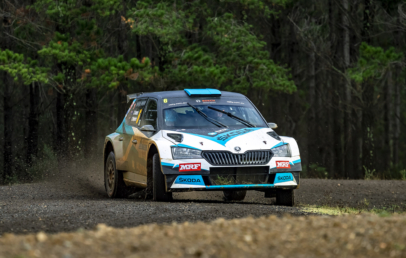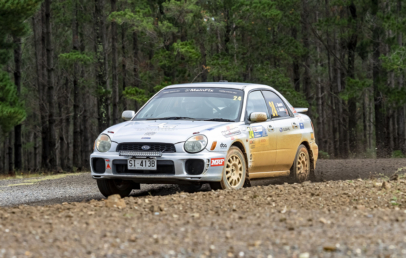The Netier National Capital Rally gets underway today with a trio of Skoda R5 Fabias taking part in the third round of the CAMS Australian Rally Championship (ARC) for the second time.
With the Skoda R5 making its debut in the CAMS Australian Rally Championship (ARC) this year, and the number of Australian-built AP4 cars growing, there has been much talk and speculation on the pros and cons of AP4s and R5s. But for those not involved in the nitty gritty of it all, what does it all mean?
It helps to first understand the basis of each of the regulations.
R5 regulations originate from the FIA and are used around the world. R5 cars are extensively modified series production cars, with turbocharged engines of a maximum of 1620cc.
They are built to a specific technical specification, incorporating an extensively modified series production bodyshell fitted with a manufacturer sourced engine (from their model range), coupled to a common transmission system (usually Xtrac or Sadev) and utilising fabricated front/rear subframes and suspension components.
R5 cars are restricted under manufacturer controls, meaning you cannot build your own from a kit, and there is a ‘price cap’ on all the major parts.
AP4 regulations were developed by the Confederation of Australian Motor Sport (CAMS) and Motor Sport New Zealand (MSNZ) for Australia and New Zealand, to allow for other makes of cars to be used and for competitors to build their own version (only a manufacturer can homologate an R5 car which is why there are only a few different marques).
AP4 cars must use an engine from the same manufacturer as the body shell or, if there is not a suitable engine within the manufacturer’s model range, it can use the designated ‘joker’ engine, an EP6 ‘Prince’ series 1598cc turbocharged engine.
CAMS ARC Sporting Director Peter Macneall explains the thought process behind the development of the AP4 regulations.
“The main reason AP4 was introduced was to try to provide a cheaper equivalent to R5 and one which could apply to any car.
“For R5 only a manufacturer can homologate a car which is why there are only a few different marques.
“In practice the cost of a competitive AP4 car may not be significantly less than an R5. However with a genuine R5 the cost of maintenance may be higher due to the need to source genuine parts from the manufacturers. It is possible to build a more affordable AP4 by using more standard parts and doing all the labour,” Macneall says.
Another benefit of the AP4 regulations is that they provide more choice and potentially open up sponsorship opportunities, either directly through the manufacturer or their agents.
Provided the car fits the criteria, the choice of manufacturer and model is wide open.
And where do the trusty Subaru WRXs, Mitsubishi Lancer Evos and the like fit?
“These are built to the CAMS PRC (Production Rally Car) regulations, which are based on the original FIA Group A regs but with the technical freedoms being given directly to competitors rather than to the vehicle manufacturer,” Macneall explains.
“PRC cars are the mainstay of most competition in Australia and will continue to be the predominant type of vehicle for many years to come.
“The unfortunate situation is that Mitsubishi no longer make a suitable vehicle when the Evo X stopped production, leaving Subaru as the only manufacturer of suitable turbo charged 4WD vehicles.”
The Netier National Capital Rally’s first heat takes place around the Kowen Forest area east of the city, before moving to the west of Canberra on Sunday for the narrow, technical stages off Brindabella and Paddys River Roads.
Keep up to date at rally.com.au for all the latest news, videos and results from the Netier National Capital Rally this weekend




